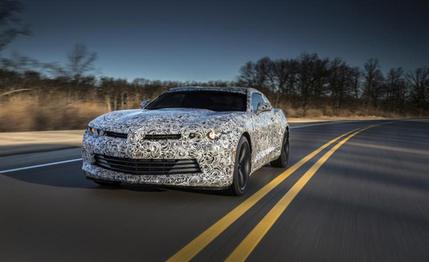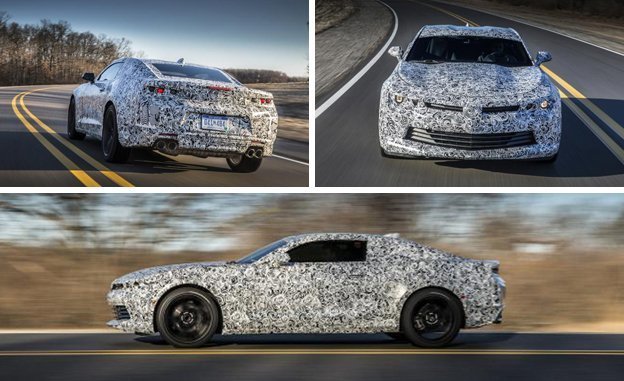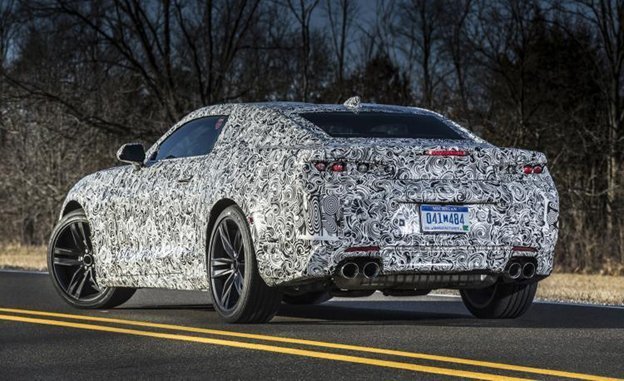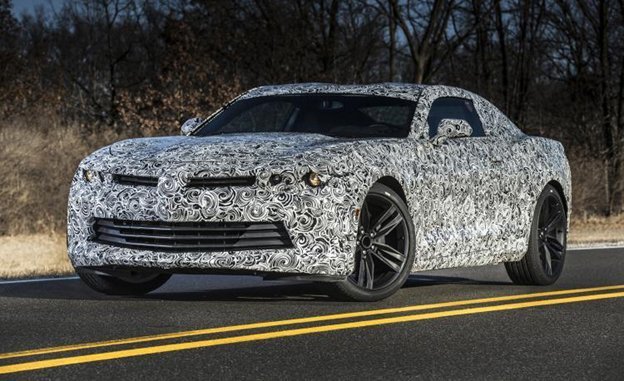 Prototype Drive
Prototype Drive
When the current, fifth-generation Chevrolet Camaro arrived as a 2010 model, it ended the nameplate’s seven-year absence from the market and finally banished the Camaro’s image as a crude muscle car. With its independent rear suspension, solid structure, and strong powertrains, the fifth-generation Camaro was thoroughly modern.
Yes, it was still large and heavy, and its high beltline combined with its chopped roof gave it somewhat of a cartoonish image and compromised visibility. But it successfully incorporated cues from the original, 1960s Camaro and was instantly recognizable, and appreciated, by Chevy enthusiasts. Not only did the fifth-gen model sell well over half a million copies during its six-year production run, but it also outsold its crosstown rival, the Ford Mustang, for the first time in memory.
As a result, Chevrolet has concluded that Camaro buyers aren’t looking for styling innovation. “From every angle, you’ll never mistake this for anything but a Camaro,” says Tom Peters, Camaro design director. That’s for sure, but the new model also looks both more muscular than before and a bit cleaner. For example, the pseudo vents punched into the sheetmetal forward of the rear wheels are gone, but the dip in the middle of the roof is more pronounced. This seems opposite to the direction that Ford has taken with its new Mustang, which is decidedly busier looking than its predecessor.
The close aesthetic resemblance between the gen-five and gen-six Camaros might suggest that the new car is simply an upgraded version of its predecessor, but nothing could be further from the truth. While the old model was built on GM’s Zeta platform, which originated in Australia and also underpinned the late Pontiac G8—and the current Chevrolet SS—the new Camaro is built on GM’s Alpha platform, which debuted on the Cadillac ATS three years ago.

The Alpha platform is both stiff and light. As a result, the new Camaro’s body-in-white—basically the bare body shell before any suspension, interior, or exterior panels are attached—weighs 133 pounds less than the previous-gen equivalent.
An aluminum dashboard crossbar saves a further nine pounds, and the suspension is 26 pounds lighter thanks to extensive use of aluminum and carefully optimized steel components. Overall, the Camaro SS is said to shed about 200 pounds despite a slightly heavier upgraded V-8 engine, while the Camaro LT is more than 300 pounds lighter, according to Chevy, thanks to the new standard four-cylinder engine. We’re looking forward to quantifying the weight savings on our own scales soon.
Lest you be alarmed that this portends a return to the gutless, “Iron Duke”–powered Camaros of yesteryear, the new base engine is the 2.0-liter turbocharged four used in the ATS, developing 275 horsepower and 295 lb-ft of torque. It will be available with either a Tremec TR3160 six-speed manual or GM’s new 8L45 eight-speed automatic—a smaller version of the 8L90 that debuted in the Corvette. It weighs 33 pounds less than its beefier big brother. Chevy promises that zero-to-60 times for the four-cylinder Camaro will be in the five-second range, with EPA highway fuel economy said to land in the 30s.

The middle engine option will be the company’s new 3.6-liter V-6. This engine is a thorough redo of the existing V-6 with its cylinders spread farther apart, a slightly larger bore, a quieter cam-drive system, and variable displacement. It’s lighter than the previous V-6 and will develop 335 horsepower and 284 lb-ft; it also will be available with both transmissions.
The SS model will come with the LT1 V-8, the latest iteration of the small-block V-8 that was introduced in the C7 Corvette Stingray. With direct fuel injection and variable cam timing, it provides an excellent combination of power and efficiency. It will also come with manual and automatic transmissions, the Tremec TR6060 and the GM 8L90. You’ll note that those are beefier versions of both transmissions to match the V-8's output of 455 horsepower and 455 lb-ft, increases of 29 hp/35 lb-ft over today’s LS3 V-8 and 55 hp/45 lb-ft versus the current L99 engine.
We had no opportunity to drive the SS V-8, but we did get a few minutes behind the wheel of both manual and automatic LT V-6 models on the ride-and-handling loop at GM’s Milford Proving Ground.
Unfortunately, the development cars had so many squeaks and rattles that it was impossible to determine if they were any more refined than the perfectly-screwed-together fifth-gen cars on hand for comparison. In fact, these examples, at the end of their production cycle, were as smooth and quiet as any Camaros we’d ever driven.
However, we did determine that the TR3160 manual transmission is a smooth and satisfying gearbox, and we were particularly impressed by the new 8L45 automatic, which shifted smoothly and decisively, whether driven gently or aggressively. The eight-speed executes quick and slick full-throttle kickdowns, even when dropping four or more gears at a time.
During this full-throttle work, the optional dual-mode exhaust leaves no doubt that the Camaro philosophy was first dictated in the muscle-car era of the 1960s. In fact, between the loud exhaust, the “sound enhancers”—essentially calibrated firewall noise leaks—and the bucket-of-bolts feeling of these prototypes, it was impossible to determine whether the new V-6 was any smoother at high revs than its thrashy predecessor.

There was no opportunity to explore handling, but we did get a sense that the new electric power steering is a decent example of the breed, delivering close to the steering feel of the hydraulic power steering in the current V-6 versions. And we picked up some hints of improved agility, thanks to the lighter weight and the upgraded suspension.
The driving position is much as it was before, with a high beltline and a narrow view out, although the cowl is about an inch and a half lower. This feeling of being buried in the cockpit is particularly strong if you lower the seat all the way, as it goes down farther than it did before. Taller drivers will appreciate this change. For the rest of us, it will pay to raise the seat roughly halfway. Also appreciated are the thinner A-pillars—they’re about an inch less thick front to rear and half an inch leaner from the side. Both changes provide a welcome improvement in visibility. For those who care, rear head- and legroom are slightly reduced thanks to the car's slightly smaller overall dimensions.
The traditional instrument cluster in a hooded binnacle is retained with the new Camaro, but the four minor dials in squarish housings just forward of the shifter are gone, replaced by a configurable LCD display between the speedo and tach. A second LCD display—an 8.0 incher—sits in the center of the dash when you order the navigation system.
Coupled with the strip of subtle heating and A/C controls, which include temperature-setting dials nicely integrated into the two low-mounted center vent registers, the overall interior ambiance strikes us as clean, uncluttered, and user-friendly.
We look forward to driving the fully developed versions of these cars, but for now, it’s clear that with this new Camaro, Chevrolet has stayed true to a successful formula while improving the car on many fronts. Camaro fans will be delighted.